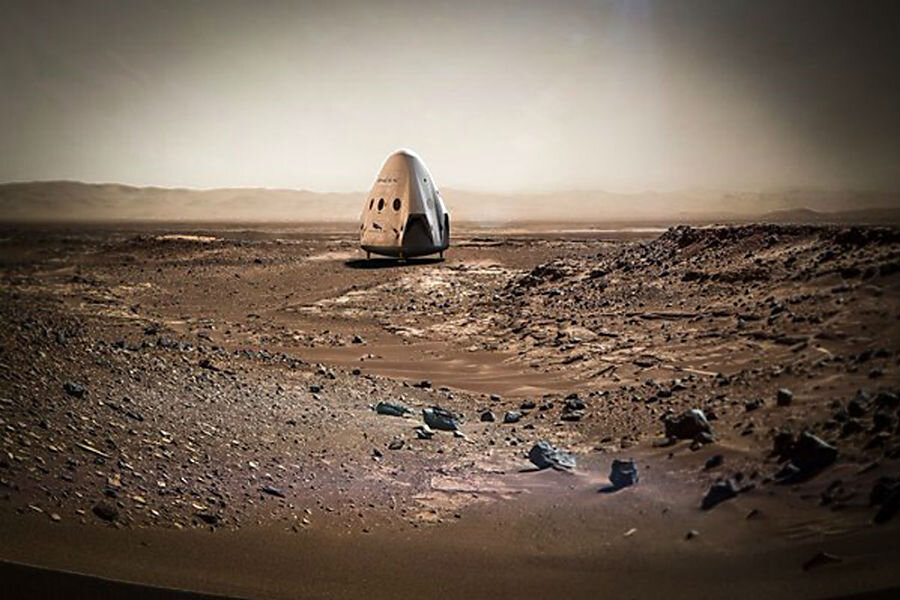Mars or bust: Can SpaceX really get to Red Planet by 2018?
Loading...
SpaceX on Wednesday announced its intentions to send its unmanned Red Dragon landers to Mars by 2018.
The Hawthorne, Calif.-based company headed by Elon Musk says it will work with the National Aeronautics and Space Administration (NASA) to complete its goal of probing the Red Planet in an unusual partnership between a US government agency and a private entity.
The partnership “is more similar to what you might have with a government to government agreement,” former NASA deputy administrator Lori Garver told The Washington Post. “[I]t is breaking new ground, and I think it’s a good sign that NASA is even a partner. It shows there are people at NASA who are as excited about this as a lot of us are.”
A NASA blog post by its Deputy Administrator Dava Newman confirmed the agency’s provision of “technical support” on the Red Dragon project. The space agency expects that SpaceX will be able to offer “valuable entry, descent and landing data to NASA for our journey to Mars, while providing support to American industry,” an administration spokesperson told CNBC on Wednesday. SpaceX and NASA currently work together with a "no transfer of funds" policy.
"As the saying goes, 'spaceflight is hard.' Sending astronauts to Mars, which will be one of the greatest feats of human innovation in the history of civilization, carries with it many, many puzzles to piece together. That’s why we at NASA have made it a priority to reach out to partners in boardrooms, classrooms, laboratories, space agencies and even garages across our country and around the world," Dr. Newman wrote.
Mr. Musk, who founded SpaceX on a platform of commercial space travel, said via Twitter that the Red Dragon mission would be a “first test flight” for his manned Dragon 2 landers, in effort to prove they can “land anywhere in the solar system.”
NASA’s desire to further explore Mars and send humans there by 2030, coupled with Musk’s “bravado” and desire to push space travel forward while stretching the “limits of feasibility” could make the 2018 target date a possibility, especially without the added complication of providing for astronauts, according to George Washington University space historian John Logsdon.
“NASA has more expertise in getting to and landing on Mars than any other organization in the world,” Mr. Logsdon said. “So if a US company wants to try it on a no-exchange-of-funds basis, why not?”
Actually getting the SUV-sized, seven-ton Red Dragon successfully to Mars is no small task, even with support from relatively experienced NASA.
SpaceX will be the first non-governmental organization to attempt a Mars landing, and will provide more information on the NASA partnership and its overall designs on Martian travel at a September aeronautics conference, according to Reuters. Musk already announced his intentions to send humans to Mars in the 2020s, nearly a decade ahead of NASA’s schedule.






